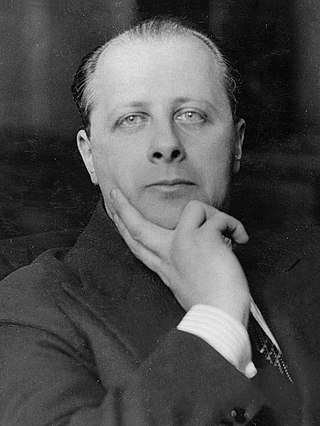
Don Camillo and Peppone are the fictional protagonists of a series of works by the Italian writer and journalist Giovannino Guareschi set in what Guareschi refers to as the "small world" of rural Italy after World War II. Most of the Don Camillo stories came out in the weekly magazine Candido, founded by Guareschi with Giovanni Mosca. These "Little World" stories amounted to 347 in total and were put together and published in eight books, only the first three of which were published when Guareschi was still alive.

Giovannino Oliviero Giuseppe Guareschi was an Italian journalist, cartoonist and humorist whose best known creation is the priest Don Camillo.

Palmiro Michele Nicola Togliatti was an Italian politician and leader of Italy's Communist party for nearly forty years, from 1927 until his death. Born into a middle-class family, Togliatti received an education in law at the University of Turin, later served as an officer and was wounded in World War I, and became a tutor. Described as "severe in approach but extremely popular among the Communist base" and "a hero of his time, capable of courageous personal feats", his supporters gave him the nickname il Migliore. In 1930, Togliatti renounced Italian citizenship, and he became a citizen of the Soviet Union. Upon his death, Togliatti had a Soviet city named after him. Considered one of the founding fathers of the Italian Republic, he led Italy's Communist party from a few thousand members in 1943 to two million members in 1946.
Candido is both a given name and a surname. Notable people with the name include:

Carlo Alberto Rosselli was an Italian political leader, journalist, historian, philosopher and anti-fascist activist, first in Italy and then abroad. He developed a theory of reformist, non-Marxist socialism inspired by the British Labour movement that he described as "liberal socialism". Rosselli founded the anti-fascist militant movement Giustizia e Libertà. Rosselli personally took part in combat in the Spanish Civil War, where he served on the Republican side.

Oggi is an Italian weekly news magazine published in Milan, Italy. Founded in 1939 it is one of the oldest magazines in the country.
Bertoldo was a biweekly magazine of surreal humour that ran from 14 July 1936 to 10 September 1943 under Italian Fascism. The magazine was based in Milan. While the Becco Giallo magazine put out courageous political satire against the fascist regime, the reactionary authors of Bertoldo, like Marcello Marchesi, as well as Marc'Aurelio, developed a kind of surreal humour that was accepted by the regime.

Epoca was anillustrated weekly current events magazine published between 1950 and 1997 in Milan, Italy. It was one of the leading magazines during its run.
Il Politecnico was a Communist cultural and literary magazine published in Milan, Italy, between 1945 and 1947. In the debut editorial it was stated that the magazine was inspired by the homonymous journal which had been founded by Carlo Cattaneo in 1839 and published until 1845.

Tempo was an illustrated weekly news magazine published in Milan, Italy, between 1939 and 1976 with a temporary interruption during World War II.
Noi donne is an Italian language monthly feminist magazine published in Rome, Italy. It is one of the most significant feminist publications in the country.

Giorgio Pisanò was an Italian journalist, essayist and fascist politician.

Mauro Scoccimarro was an Italian economist and communist politician. He was one of the founders of the Italian Communist Party and the minister of finance between 1945 and 1947.
Il Travaso delle idee, mostly known as Il Travaso, was a satirical magazine which was in circulation between 1900 and 1966 with an interruption in the period 1944–1946. Its subtitle was Organo ufficiale delle persone intelligenti. The magazine was headquartered in Rome, Italy.
Cantachiaro was an Italian weekly satirical magazine which had a radical anti-Fascist stance. The magazine was in circulation between 1944 and 1948 and was based in Rome, Italy.
Asso di bastoni was a weekly satirical and political magazine which was headquartered in Rome, Italy. It was in circulation between 1948 and 1957. The magazine was the organ of the Repubblica Sociale Italiana which was established by the members of the Italian Social Movement, a neo-fascist political party.
Guerin Meschino was a weekly satirical magazine which existed in Milan between 1882 and 1949 with an interruption in the period 1925–1943. It had an anti-Fascist and leftist political stance which led to this long-term hiatus.
Pattuglia was a weekly communist satirical magazine published between 1948 and 1953 in Milan, Italy. It was official media outlet of the youth organization of the Italian Communist Party. Its subtitle was il corriere dei giovani.

Eugenio Reale was an Italian politician.










